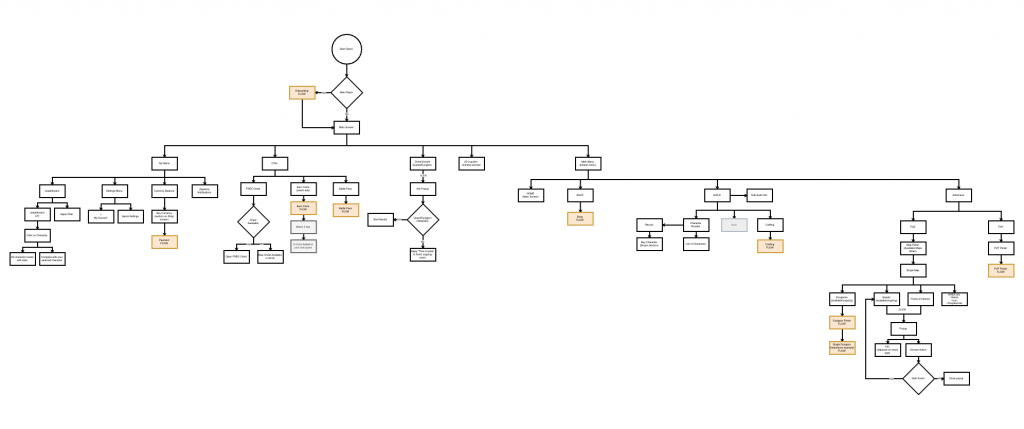Using IA to Create a Mobile Game Blueprint
When creating something as visual and creative as a game, it is very easy to skip this very important step – Information architecture (IA). Though it is not as visual as user interface (UI), IA serves to inform UI, and not investing time in its design is something that happens too often with games and can eventually be a costly mistake.
Like any other digital product, a game needs to be logical and usable, this is where IA comes into play. Building an information architecture is like making a blueprint of the game, it should start long before any visuals have been designed and it will serve as a guiding tool for everything that follows.
Starting from the beginning
I can honestly say that having a client ask for assistance in such an early stage of product development is always a delight, not only does it mean starting a project with a clean slate for me, but also much less wasted resources for the client.

Writing it down
This Client had a game idea, and they needed some help in conceptualizing and scoping it. In cases like this, it’s always best to start with a simple text document as a way of dumping all the ideas and details out of the client’s head onto a piece of paper (digital document in this case).
Once everything is out in the open/written, the Client finally had a clear overview of everything that was cluttering their brain and on top of that, after reviewing the document we made together, some new ideas came to mind and some old ones didn’t make the cut.
Mapping it out
Being a brand-new game in a pre-prototype phase, the next step was to make the information architecture diagrams. In these diagrams, we used all the information from the document to map out the whole game.
We ended up with six diagrams for core game features, user registration/account, shop, and gameplay. Leaving us with a complete overview of game features, functionalities, and processes.

These diagrams will be used in a later game development phase to create the game’s prototype, UI hierarchy, and functionalities.
Need help with your product?
Get in touch to see how I can be of service!